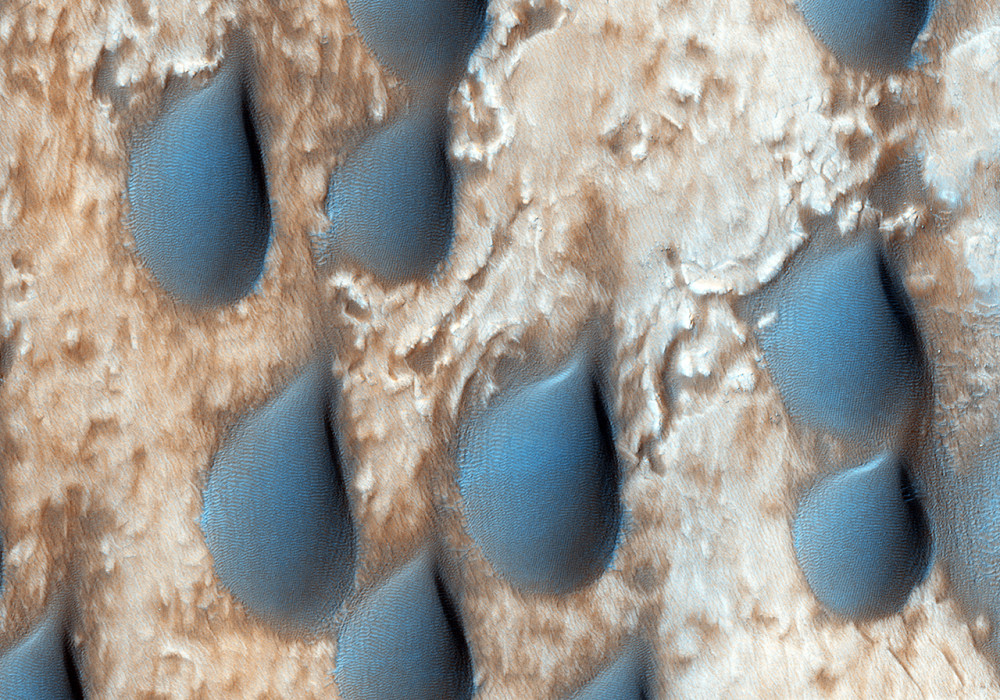The dark features here look like raindrops, but are actually sand dunes. This spot was targeted by CRISM because the dunes are rich in the mineral olivine.
Olivine-rich dunes are very rare on Earth, as olivine rapidly weathers to clays in a wet environment. There is also olivine-rich bedrock in the central peaks of Copernicus Crater on the Moon.
There is only a handful of very important scientists, like Nicolaus Copernicus (1473-1543) who have craters named after them on both Mars and the Moon.
Written by: Alfred McEwen (10 April 2013)
More info and image formats at http://hirise.lpl.arizona.edu/ESP_031221_1315
Image: NASA/JPL/University of Arizona
